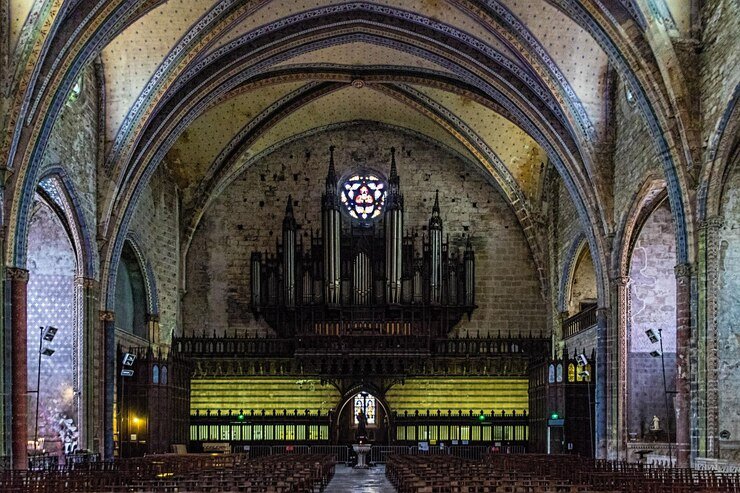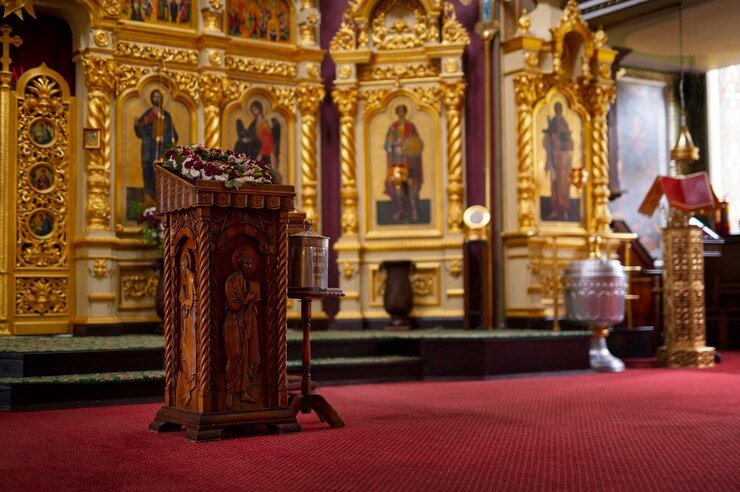Introduction to Jordi Savall and Montserrat Abbey
Jordi Savall is undoubtedly one of the most revered figures in the world of early music. A celebrated viol player, conductor, and composer, Savall has dedicated his life to reviving and preserving music from the Renaissance, Baroque, and medieval periods. With a career spanning over five decades, his work not only reconstructs history but breathes new life into it, making it resonate with modern audiences.
Montserrat Abbey, nestled in the rugged mountains of Catalonia, Spain, is equally renowned. Known for its dramatic natural setting and deep spiritual significance, the abbey has been a hub of Catalan cultural and religious life for centuries. The Escolania de Montserrat, the abbey’s boys’ choir, is among the oldest in Europe, with a legacy of musical excellence that dates back to the 13th century.
When Jordi Savall brought his expertise to the abbey for a special recording, the combination was nothing short of magical. This project connected the rich cultural and spiritual heritage of Montserrat with Savall’s passion for preserving and reinterpreting historical music.
The Making of the Recording
Savall’s recording at Montserrat Abbey stands out not only for its artistry but also for the intricate process that brought it to life. This wasn’t just a typical studio project—it was an immersive experience that merged music, history, and spirituality.
Selection of Pieces
The repertoire chosen for the recording was deeply tied to the abbey’s history. Savall and his collaborators carefully curated a collection of sacred and devotional music that would have echoed through Montserrat’s walls centuries ago. These pieces, drawn from the abbey’s historic archives, were designed to reflect the cultural and spiritual character of the site.
Recording Setup
Recording within an ancient abbey presented unique challenges. Instead of a typical studio, Savall and his team worked within Montserrat’s grand spaces, using the building’s natural acoustics to enhance the music. The soaring, vaulted architecture of the abbey created a reverberant yet intimate soundscape that modern studios could never replicate.
The setup also included meticulous attention to authenticity. The use of period instruments and historically informed performance techniques ensured that the music sounded as close as possible to how it would have in its original context.
Collaboration with the Monks
Integral to the recording were the monks of Montserrat Abbey, who actively participated in the project. Their involvement added a layer of authenticity and spiritual depth to the music. The monks were deeply familiar with the repertoire, having performed many of these works as part of their devotions. Their intimate understanding of the pieces enriched the recording, making it a true collaboration between art and faith.
Exploring the Repertoire
The music recorded at Montserrat Abbey is far more than a collection of melodies. Each piece carries with it a story—a glimpse into the religious and cultural life of medieval and Renaissance Europe.
Historical Context
Montserrat Abbey has long been a center for the preservation of sacred music. During the Middle Ages, its scriptorium produced beautifully illuminated manuscripts containing hymns, motets, and polyphonic masterpieces. These works not only served liturgical purposes but also showcased the abbey’s role as a cultural beacon.
Significance of the Pieces
The repertoire includes compositions from the Montserrat manuscript archives, such as the “Llibre Vermell de Montserrat” (Red Book of Montserrat), a famous 14th-century collection of devotional songs. These pieces were performed by pilgrims who visited the abbey, offering a rare insight into the music of that era.
Savall’s interpretations retain this historical significance while emphasizing the universal themes of faith, hope, and the human spirit. Whether through intricate polyphony or soul-stirring plainchant, the music bridges the gap between past and present.
Resonance with Modern Audiences
What makes these recordings truly remarkable is how they resonate with listeners today. Despite their origins in another time, the compositions evoke emotions and ideas that remain timeless. Savall’s work ensures that the music’s beauty and meaning are not lost but are instead accessible and relevant for contemporary audiences.
Impact on Cultural Preservation
Savall’s recording exemplifies the critical role that projects like this play in preserving cultural heritage. Without such efforts, centuries-old music could fade into obscurity, leaving future generations disconnected from their historical roots.
Making History Accessible
By recording these pieces, Savall brings them out of the confines of the abbey’s archives and into the hands of listeners worldwide. Digital technology further amplifies this accessibility, making it possible for anyone to experience the music, regardless of their geographical location or background.

Inspiring New Generations
This recording serves as an inspiration for scholars, musicians, and enthusiasts alike. It highlights the importance of interdisciplinary collaboration between historians, performers, and institutions in safeguarding our shared cultural treasures.
Strengthening Community
The project also strengthens bonds between communities of faith and music lovers. It showcases how shared heritage can unite people, sparking dialogue and appreciation for traditions that transcend time and place.
Insights from the Artist
Jordi Savall has often spoken about the profound emotions he experienced during the Montserrat recording project. He describes it as a spiritual journey—a chance to connect deeply with the music and the sacred space in which it was created.
Reflecting on the project, Savall once noted, “At Montserrat, the music is not merely performed—it is lived. Each note carries the weight of centuries, and to bring that to life is both a responsibility and a privilege.”
Savall also acknowledged the challenges of recording in such a unique environment. From dealing with the abbey’s inherent acoustical quirks to ensuring the authenticity of every performance, the project required extraordinary attention to detail. Yet, he emphasizes that these challenges were entirely worth it, given the results.
Why Projects Like This Matter
The recording at Montserrat Abbey is a testament to the enduring power of music as a means of storytelling and connection. It reminds us of the importance of not only cherishing our cultural heritage but also sharing it with the world.
But this isn’t just about preserving history—it’s about how history enriches our present. Each listener who presses play on this recording becomes part of a continuum, a shared human experience transcending time and space.
How to Experience It Yourself
Want to be transported to the majestic halls of Montserrat Abbey? The recording is available for streaming and purchase online, offering you the chance to immerse yourself in its captivating soundscapes.
If you’re inspired to explore more, consider visiting Montserrat Abbey to witness its serene beauty firsthand. Alternatively, dive deeper into Jordi Savall’s extensive discography to uncover more unparalleled musical treasures.


